The Solana (SOL) ecosystem has made significant strides in the second quarter of 2025, especially in the decentralized finance (DeFi) sector. However, alongside growth come several challenges, from declining liquidity in the stablecoin market to volatility in the NFT sector.
DeFi TVL skyrockets by 30% – Solana strengthens its position
According to data from Messari, the Total Value Locked (TVL) in Solana's DeFi sector recorded an impressive growth of 30.4% compared to the previous quarter, reaching 8.6 billion USD. This achievement not only solidifies Solana's position as one of the leading DeFi pillars but also makes this network the second-largest TVL ecosystem in the market. The Kamino platform alone has contributed over 2 billion USD, becoming a key driver for Solana's scaling and coverage.
Nonetheless, the growth picture is not entirely complete. The average daily trading volume on decentralized exchanges (DEX) has plummeted by 45.4%, dropping to about 2.5 billion USD. The decline in interest in memecoins – which were once the "catalyst" driving liquidity – is seen as the main reason for the slowdown in trading activity on the network.
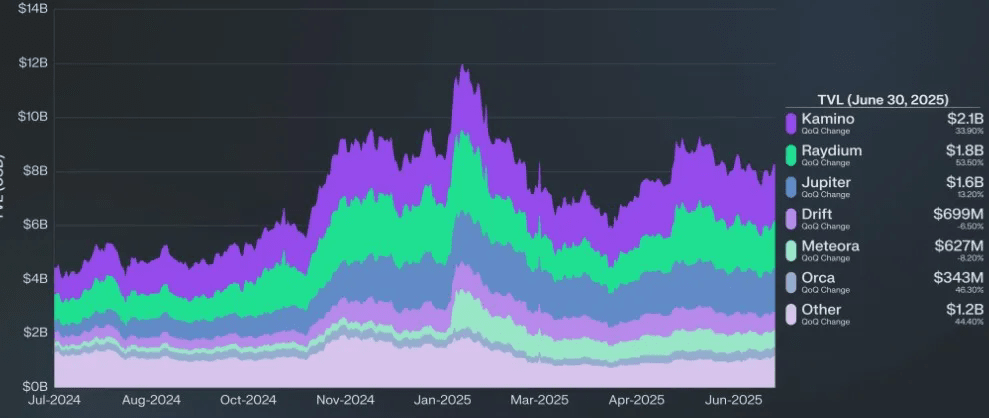
Stablecoin: Ups and downs but still showing accumulation strength
The stablecoin market on Solana in the second quarter witnessed significant fluctuations. The overall market capitalization decreased by 17.4%, down to 10.3 billion USD, placing Solana third among blockchains in terms of stablecoin scale.
The major momentum at the beginning of the year came from the launch of the TRUMP token on January 17, an event that significantly boosted liquidity and opened many trading pairs with USDC. However, by the end of the second quarter, USDC's market capitalization decreased by 25.2%, down to 7.2 billion USD but still maintained its dominant position with 69.5% market share. Meanwhile, Tether's USDT remained almost unchanged, stabilizing at 2.3 billion USD.
It is noteworthy that despite the declining market capitalization, most stablecoin liquidity still "anchors" within the Solana ecosystem. This reflects the trend that capital is not leaving the network but is accumulating again, strengthening the foundation for long-term stability and growth.
Staking and market capitalization: A solid foundation for growth
In the second quarter, the liquidity staking rate on Solana recorded a 16.8% increase, reaching 12.2%. Along with 64.8% of the total circulating supply being staked, the network not only increases profit opportunities for investors but also strengthens the stability and security of the ecosystem.
In parallel, the circulating market capitalization of SOL also surged by 29.8%, reaching 82.8 billion USD. This achievement helped Solana rise to the 6th position in the global cryptocurrency rankings, just behind the giants Bitcoin, Ethereum, Tether, XRP, and Binance Coin (BNB).
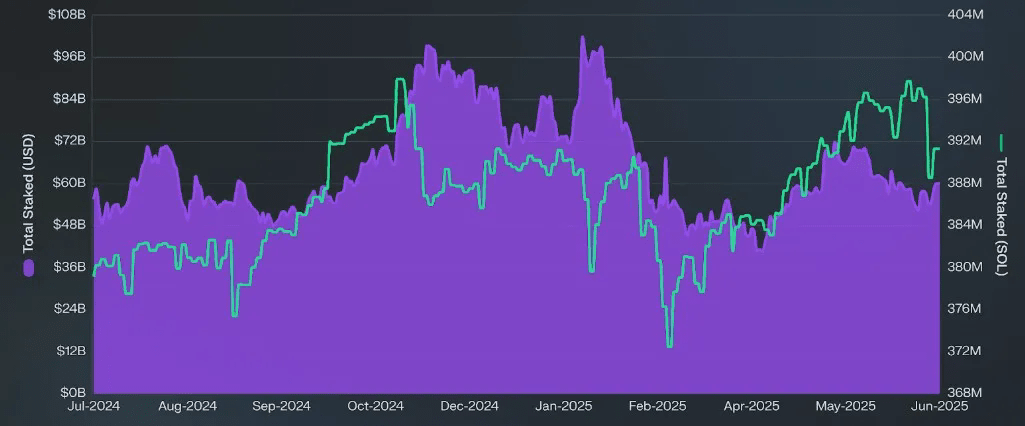
NFT: Declining liquidity but still maintaining competitive advantage
In contrast to the flourishing DeFi sector, the NFT market on Solana faced several challenges in the second quarter. The average daily trading volume plummeted by 46.4%, down to about 979,500 USD – indicating a clear cooling of speculative capital.
However, Solana still retains an important advantage: the ability to provide royalties to creators at the highest market level. This is the foundation that helps Solana's NFT ecosystem continue to attract artists, creative projects, and loyal user communities, despite a decline in trading volume.
Network activity: Stable and maintaining long-term confidence
Despite the market's fluctuations, the Solana network still demonstrates remarkable stability.
The average daily fee payer only slightly decreased by 1.4%, down to 3.9 million.
Non-voting transactions increased by 4%, reaching 99.1 million – reflecting the continued expansion of actual usage.
The average transaction fee dropped significantly by 59.6%, now only 0.01 USD, maintaining a competitive cost advantage over many other blockchains.
Notably, the total staking value reached a historic peak of 102 billion USD on January 18, when SOL hit a price of 295 USD. Although the market corrected afterward, by the end of the second quarter, the staking value still increased by 25.2% to 60 billion USD – a clear signal indicating that long-term investors continue to place their trust in the Solana ecosystem.
SOL price is in a "correction" phase but has breakout potential
According to Messari, Solana is undergoing a "correction" phase. In the second quarter, SOL's price only increased a total of 7.9%, and if calculated monthly, it only reached 2.3%. However, this does not mean complete weakness. History shows that such sideways phases often pave the way for unexpected breakouts.
CDD shows accumulation signals from long-term investors
On August 17, the Coin Days Destroyed (CDD) index of Solana sharply dropped to only 161.79 million – the second-lowest level of the month, after a spike to 1.16 billion just a day before. The 86% drop within 24 hours usually carries significant meaning: long-held coins were not liquidated.
Typically, if the "old wallets" start liquidating, CDD will spike. But current data shows the opposite – most volatility comes from newly purchased coins or those held for the short term, while long-term supply remains almost unchanged. This is not yet a definitive confirmation signal, but if CDD continues to stay low without spikes, it means large investors are temporarily halting sales and patiently waiting.
Notably, in the first weeks of August, similar declines in CDD were associated with price consolidation phases, which quickly triggered strong recoveries. This is a detail that traders should pay special attention to when observing the upcoming movements of Solana.
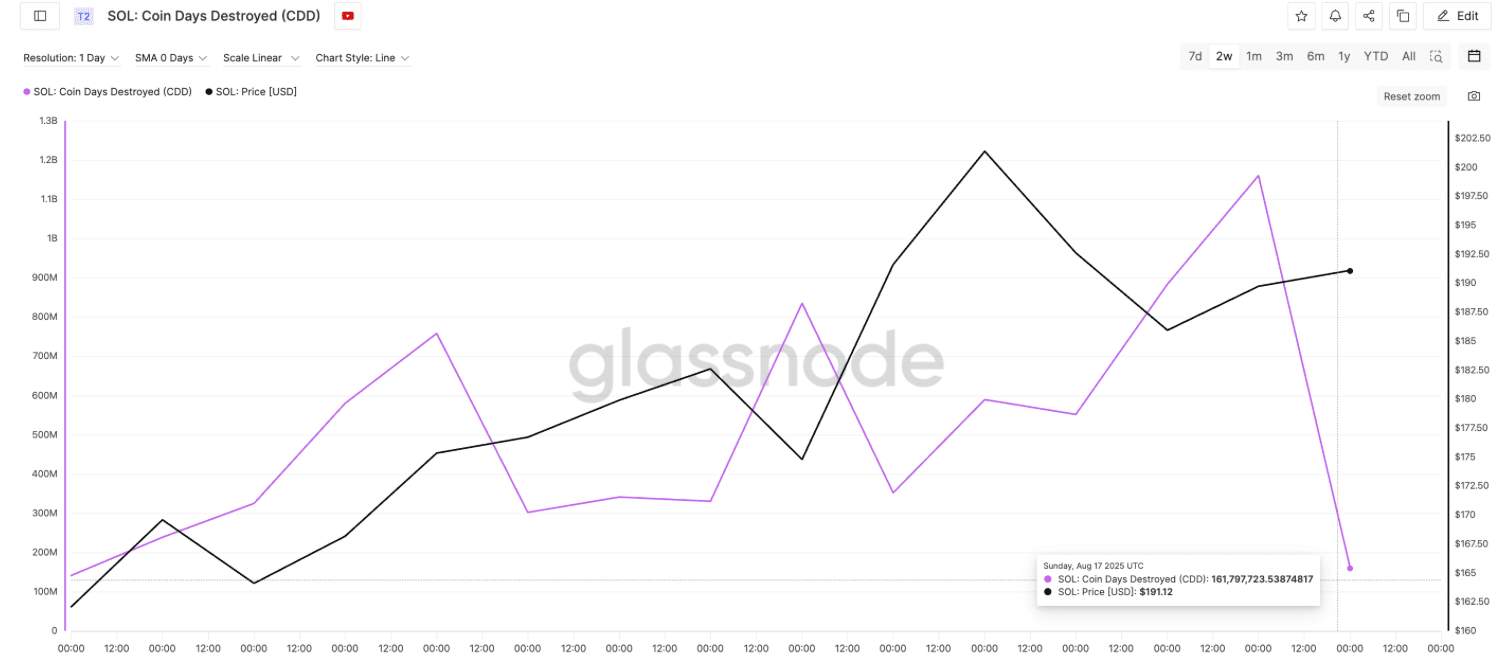
Exchange balance
When combining on-chain data with exchange balance fluctuations, the picture becomes clearer. In the period from August 14 to 16, the amount of SOL on exchanges decreased from 32.35 million to 31.23 million – meaning over 1.12 million SOL was withdrawn in just two days. Notably, this development occurred simultaneously with the price dropping from 192 USD to 185 USD.
In typical corrections, balances on exchanges tend to increase as investors rush to liquidate. However, current data shows the opposite: supply is flowing out of exchanges, a signal often associated with the accumulation process, or at least indicating that there is no panic selling mentality.
Although the balance has slightly increased again, the current level is still near the recent low, reinforcing the narrative that the Solana market is in a more quiet accumulation phase rather than liquidation.
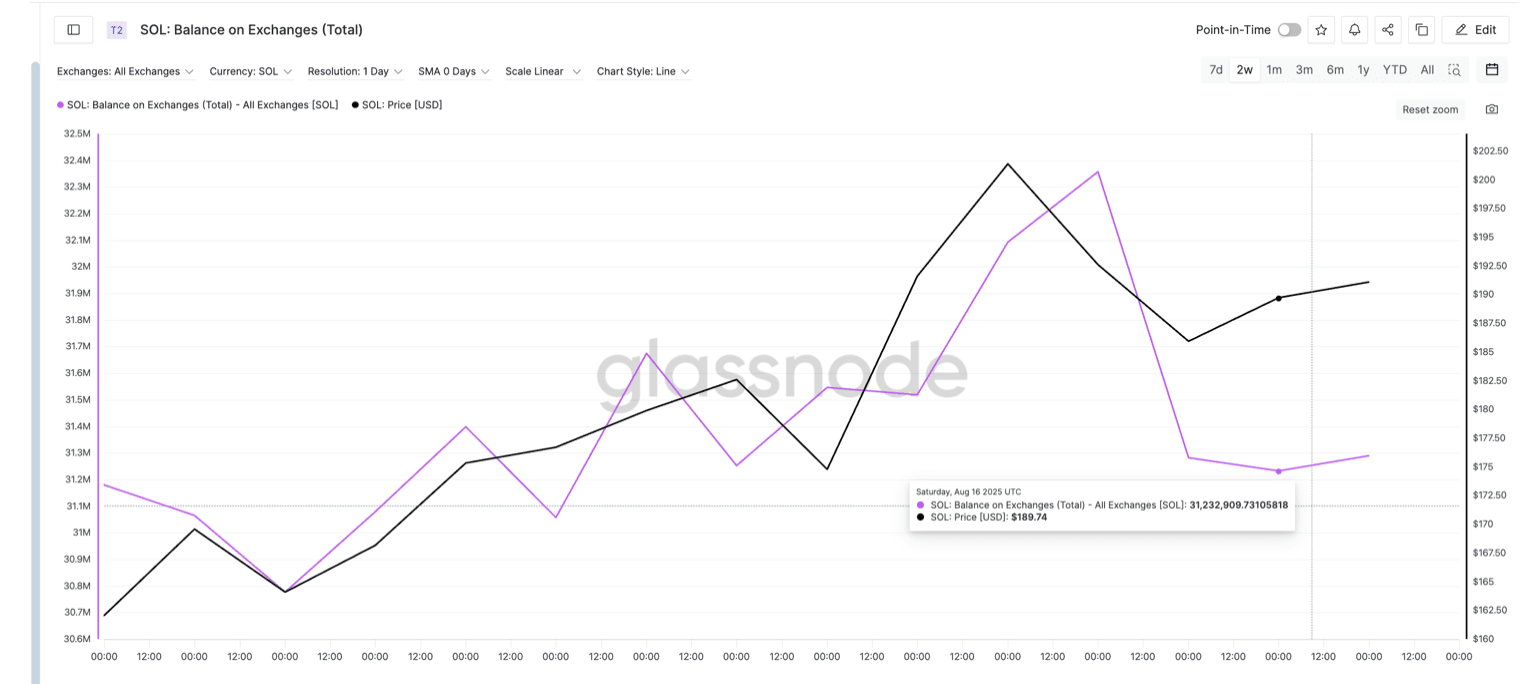
Support – key resistance
Currently, SOL is fluctuating above two important support levels of 178.24 USD and 173.46 USD – zones that have reacted strongly multiple times in early August.
If these support levels hold, SOL has the potential to continue recovering and move into the 189–199 USD range. This is seen as a key resistance zone, and only a strong breakout above 199.27 USD will truly extend the upward momentum, creating opportunities to return to the 209 USD area or higher. Conversely, if the price breaks below 173.46 USD, the short-term upward trend will quickly lose its validity.
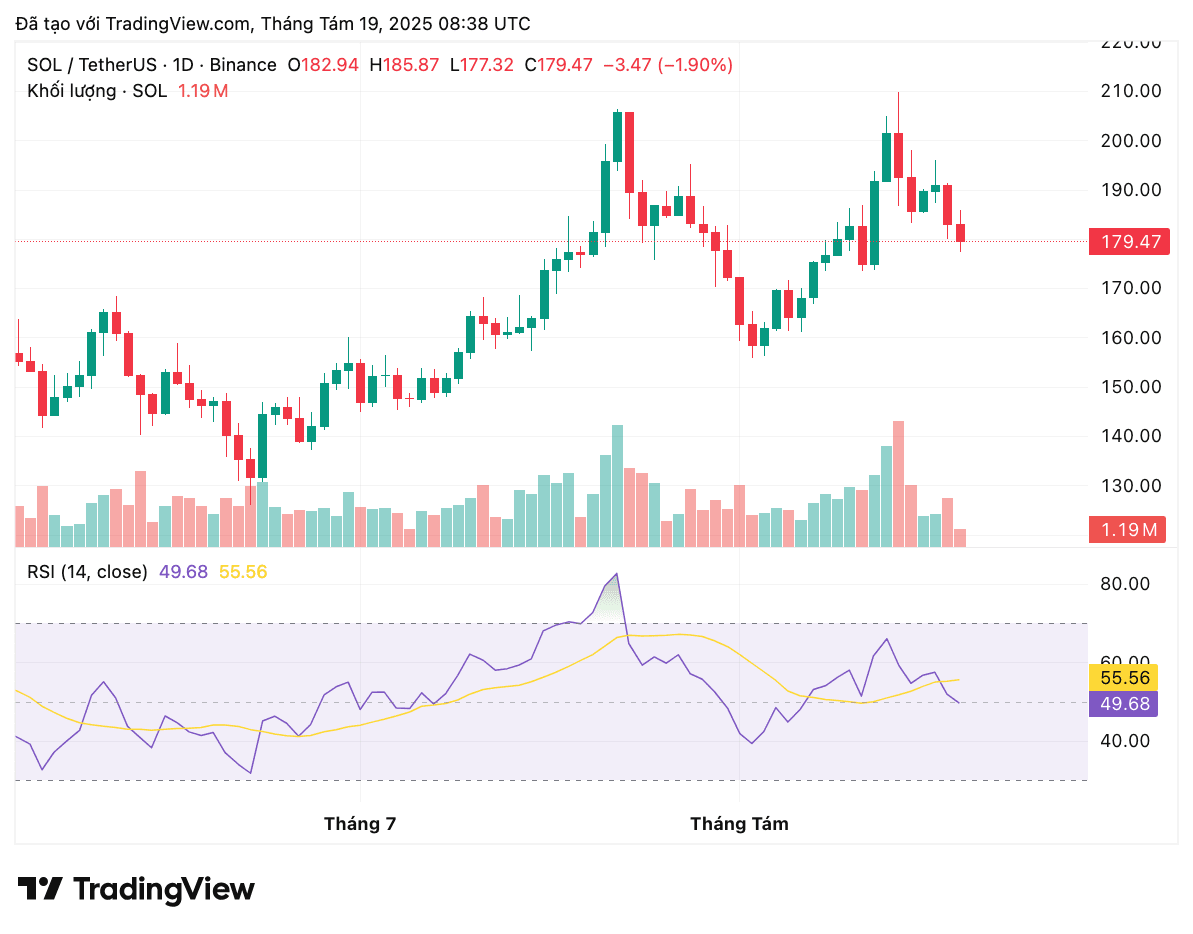
The recent price correction of SOL does not bear the hallmarks of a panic sell-off. On the contrary, on-chain data shows that large investors remain cautious, not rushing to liquidate. At the same time, the amount of SOL on exchanges continues to decrease, revealing a clear signal of a quietly ongoing accumulation process.